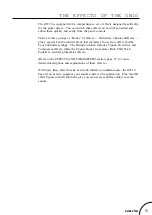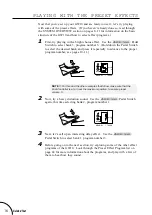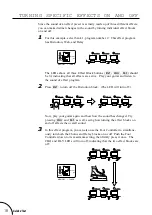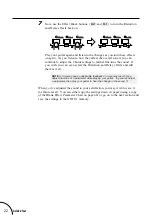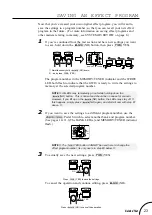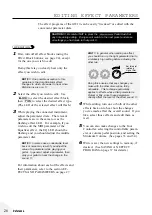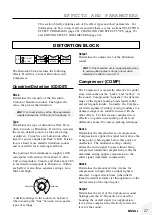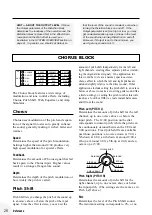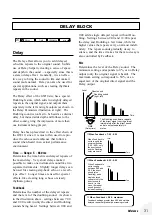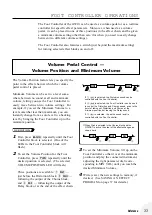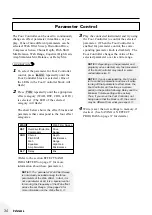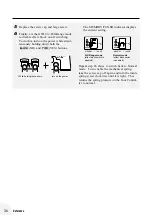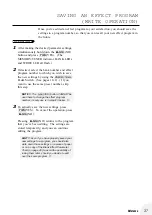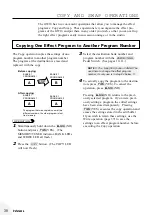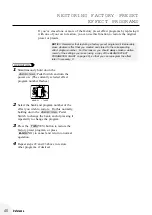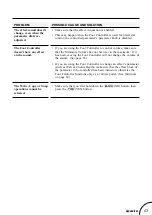
28
Reference
CHORUS BLOCK
The Chorus block features a wide range of
modulation and tone control effects, including
Chorus, Pitch Shift, Wah, Equalizer, and Amp
Simulator.
Chorus
Chorus uses modulation of the pitch and separa-
tion of the signal into stereo to greatly enhance
the sound, generally making it richer, fatter and
warmer.
Speed
Determines the speed of the pitch modulation.
Settings higher than around 4:00 produce very
high speed modulation for special effects.
Feedback
Determines the amount of Chorus signal that fed
back again to the Chorus input. Higher values
result in a stronger, flanger-like sound.
Depth
Determines the depth of the pitch modulation, or
how widely the pitch is varied.
Pitch Shift
Pitch Shift lets you change the pitch of the sound, up
to an octave above or below the pitch of the input
signal. Since the effect is stereo, you can set the
amount of pitch shift independently for the left and
right channels, creating three separate pitches (includ-
ing the original direct signal). One application for
this would be to create a natural, spacious stereo
chorus effect in which the left and right pitches are
detuned slightly relative to the direct sound. Other
applications include setting the pitch shift to an octave
below or above (to make a six-string guitar sound like
a twelve-string), or setting the pitch to other intervals
(such as a fourth or fifth) to create instant harmonies
and fill out the sound.
Pitch Left (PITCH L)
Determines the amount of pitch shift for the left
channel, up to one octave above or below the
input pitch. The 12:00 position on the dial
corresponds to unison pitch, while the pitch can
be continuously detuned between the 9:00 and
3:00 positions. Fixed pitch shifts are available
past those positions: an octave down at 7:00, a
5th down at 8:00, a 4th down at around 9:00, a
4th up at around 3:00, a 5th up at 4:00, and an
octave up at 5:00.
Pitch Right (PITCH R)
Determines the amount of pitch shift for the
right channel, up to one octave above or below
the input pitch. (The settings are the same as in
Pitch Left above.)
Mix
Determines the level of the Pitch Shift sound.
The minimum setting corresponds to 0%, or no
TYPE
LOW
SENSE
PITCH L
SPEED
TONE
MID
FREQ
PITCH R
FEEDBACK
MIX
HIGH
RANGE
MIX
DEPTH
CHORUS
P . SHIFT
WAH
EQ
AMP
CHO
HINT — ABOUT THE OUTPUT LEVEL
■
Since
the Output parameter of the Distortion block
determines the loudness of the overall sound, the
Distortion block is placed first in the effect chain
(except when the Wah effect is used; see
illustration in the SYSTEM OVERVIEW section on
page 8). In general, you should set Output so
that the level of the sound is constant, even when
turning the Distortion block on and off. If the
Output parameter is set too high or low, you may
get unwanted sudden jumps or drops in the level
of the sound when turning Distortion on and off.
Moreover, if Output is set to the minimum, you
won’t get any sound at all.
■
Unison pitch
4th down
5th down
octave down
4th up
5th up
octave up
detuned
detuned


